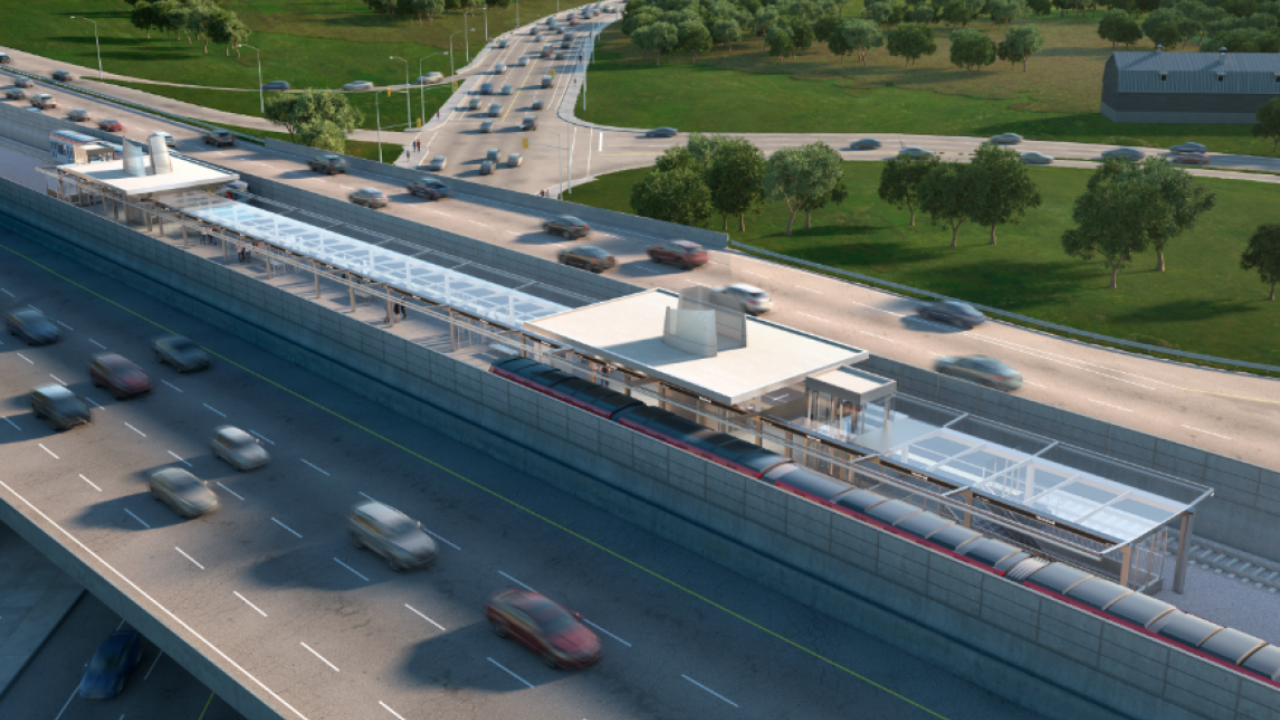Bike Ottawa’s Advocacy Working Group has recently created a subgroup dedicated to safe cycling issues in the east end of the city. As one of their first projects, they have been looking at cycling connections to future Stage 2 LRT stations. Read on for the letter prepared by volunteer Daniel Domen providing our recommendations for the Montreal Rd station and the response from the Stage 2 Project Team at the city. AWG continues to work with city staff and Councillors Tierney, Dudas, and Luloff to improve cycling and pedestrian safety.
Here is our letter:
Alison Lynch (LRT Stage 2 Stakeholder Relations)
April 18, 2020
Subject: LRT Stage 2 Montreal Rd Station
Dear Ms. Lynch,
With an update coming to Montreal Rd at the Highway 174, as a result of LRT Stage 2, we are requesting changes be made to improve safety for cyclists travelling to and from Montreal Rd Station. The current infrastructure in this area is unsafe as a result of floating bike lanes. Floating bike lanes are dangerous because they put people on bikes in conflict with drivers moving at high speeds. The danger of these types of lanes resulted in the death of a person on a bike on Laurier street in 2019. In addition to this, some of these lanes are quite long and up-hill which results in cyclists travelling slower while vehicles are maintaining their speed, putting the person on a bike in further danger.
With more pedestrians and cyclists expected to be using this station year round, all season safe access for these individuals should be top priority to increase LRT ridership. Therefore here are our following recommendations to increase cyclists usage of this station:
Eastern & western side of the bridge
- Removal of all floating bike lanes on Montreal Rd and St. Joseph Blvd between Shefford Rd and Bearbrook Rd/Sir George-Étienne Cartier Parkway. Appendix A-1:5
- Installation of segregated cycling facilities accessible in all seasons.
- Removal of the vehicle lane on the North side of Montreal Road that connects the Shefford Rd right turn slip lane and 174 Westbound off ramp.
- All highway on/off ramps and the Beacon Heights Retirement Residence entrance should connect to Montreal Rd at a 90 degree connection. To facilitate reduced vehicle speeds.
- All pedestrian and cycling crossings of on/off ramps and the entrance of the Beacon Heights Retirement Residence should be raised to decrease vehicle speeds while crossing.
- Crossing should also be set back slightly from any intersection to allow vehicles a better view of those crossing the street while turning.
Intersections of Montreal Rd & Shefford Rd, and St. Joseph Blvd & Bearbrook Rd/Sir George-Étienne Cartier Parkway
- These intersections should be updated to fully protected intersections.
- The installation of a protected intersection will remove the slip lanes, which are a danger to pedestrians and people on bikes. A protected intersection will allow turning vehicles a better view of both pedestrians and people on bikes. It will also force drivers to slow down before turning, making the road safe for vulnerable road users.
- A protected intersection would also have corner islands to slow vehicles down while turning and provide a clear line of sight of pedestrians and cyclists.
- Installation of segregated cycling facilities accessible in all seasons.
- Removal of all floating bikes lanes leading to these intersections. Appendix A-6:10
- Crossings should be set back from the intersection to allow turning vehicles to have a better view of individuals crossing the road while turning.
- Set back stop lines for vehicles so that pedestrians and cyclists are ahead of vehicles and in full view.
- Advanced cycle and walking signals, to allow pedestrians and cyclists to cross the intersection before vehicles begin to.
- With the increased interaction of cyclists/pedestrians with large trunks at the intersection of St Joseph Blvd and Bearbrook Rd, as a result of La Farge Quarry on Bearbrook Rd, it is important that these safety measures be implemented to prevent an accident like the one downtown, where a large truck was turning right and killed a cyclist.
During construction of LRT Stage 2
- The re-installation of Flexi Posts from 2019 in this area to provide safer infrastructure during construction.
- During the construction the current bicycle lanes must remain open and free of debris/obstacles (stones, pylons, etc.). If the bicycle lane must be closed, then a suitable and protected detour must be put in place. Without a proper detour you will be placing people on bikes at risk, sharing the lane with drivers moving at high speed. Do not place cyclist in the same lanes as vehicles and use single file signage, this results in an increased danger and an increase in verbal harassment from drivers. Appendix A-11:12
Orleans Corridor Study
We also support the request by Councillor Dudas that Montreal Rd station and the surrounding area be included in the Orleans Corridor Study. Connecting to this station is important for citizens from Blackburn Hamlet and Beacon Hill.
Thank you for your time. If you have any questions or would like to discuss this letter further please email info@bikeottawa.ca
Kind regards,
Bike Ottawa and the below signed members of the cycling community.
[…]
Cc: Coun. Tim Tierney, Coun. Matt Luloff, Coun. Laura Dudas, Mayor Jim Watson, Vivi Chi
Appendix A
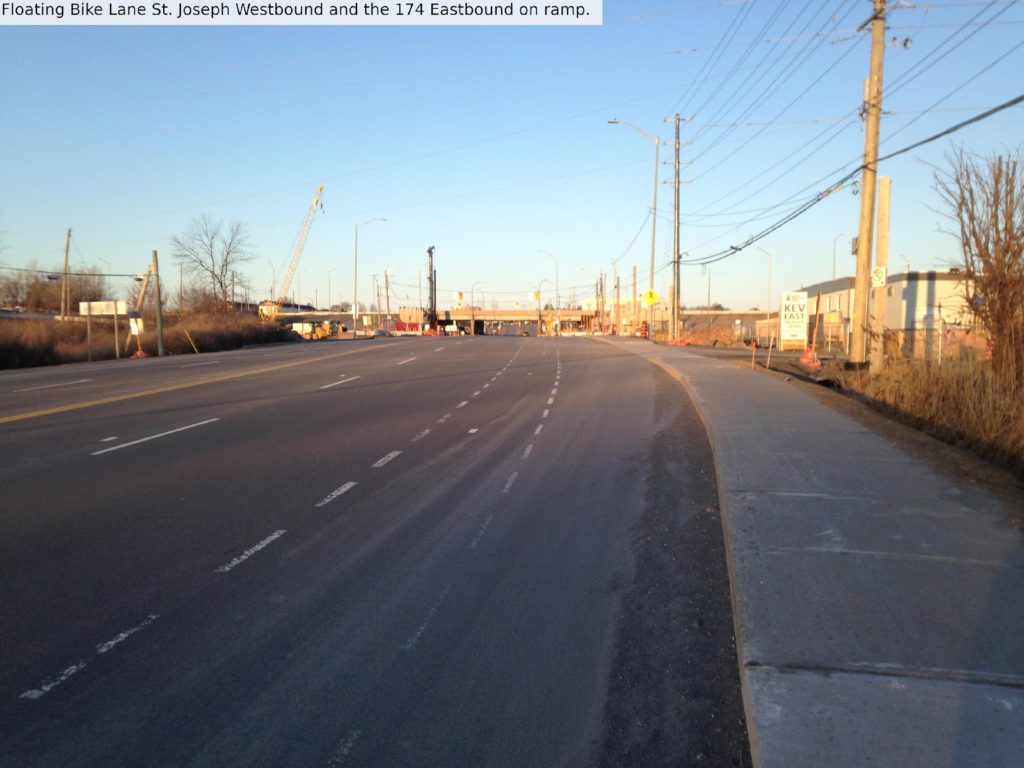

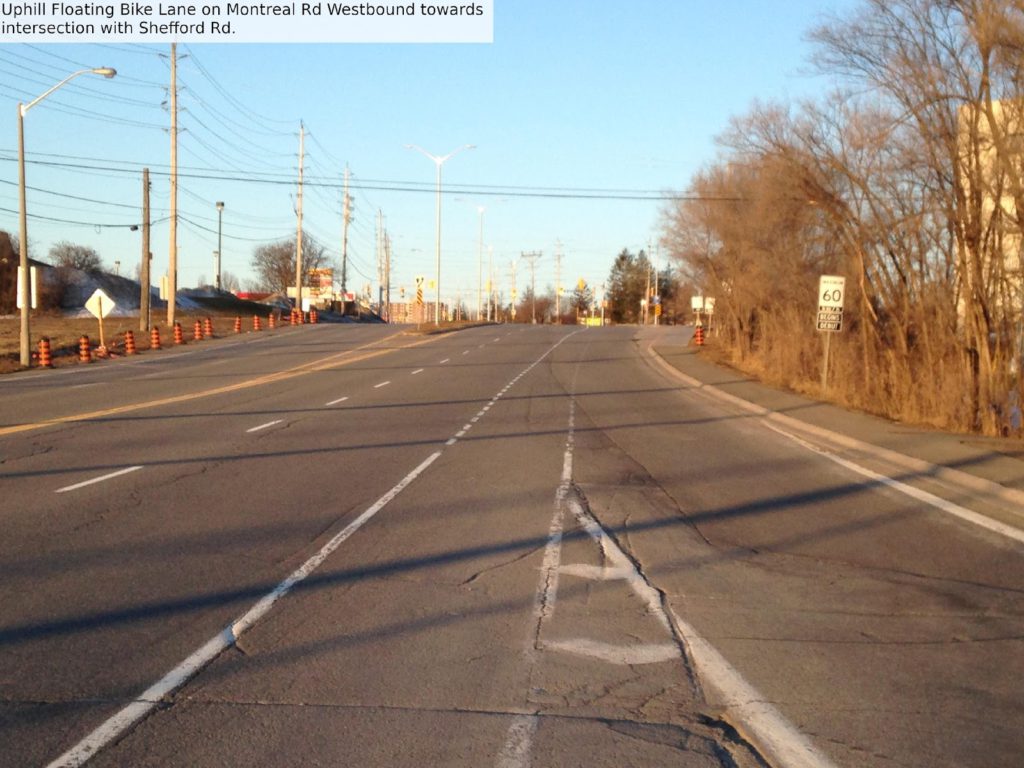
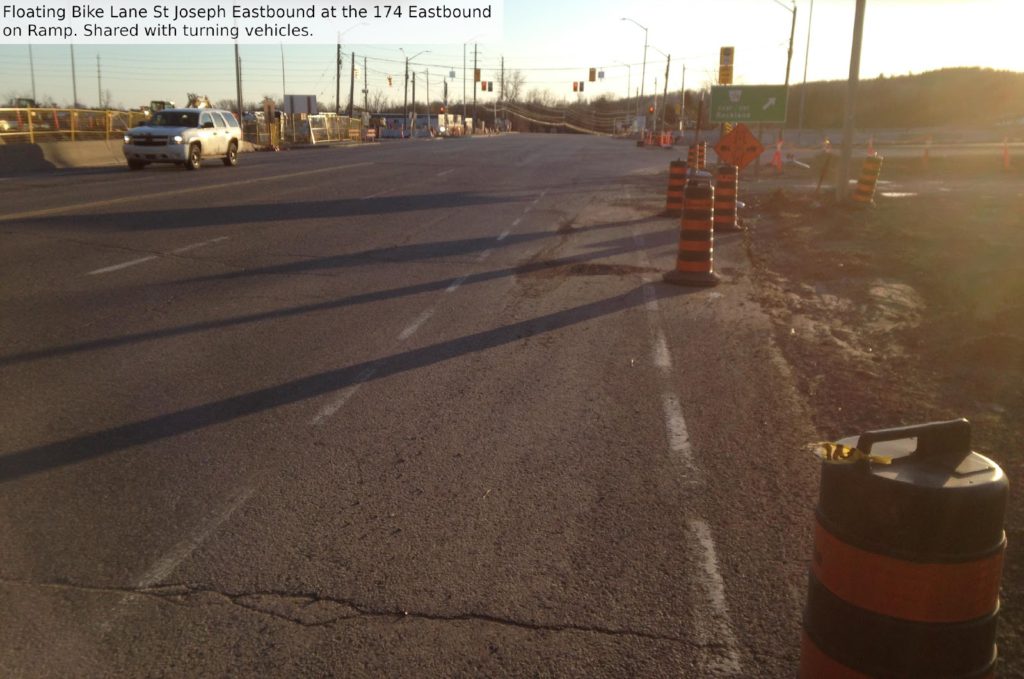
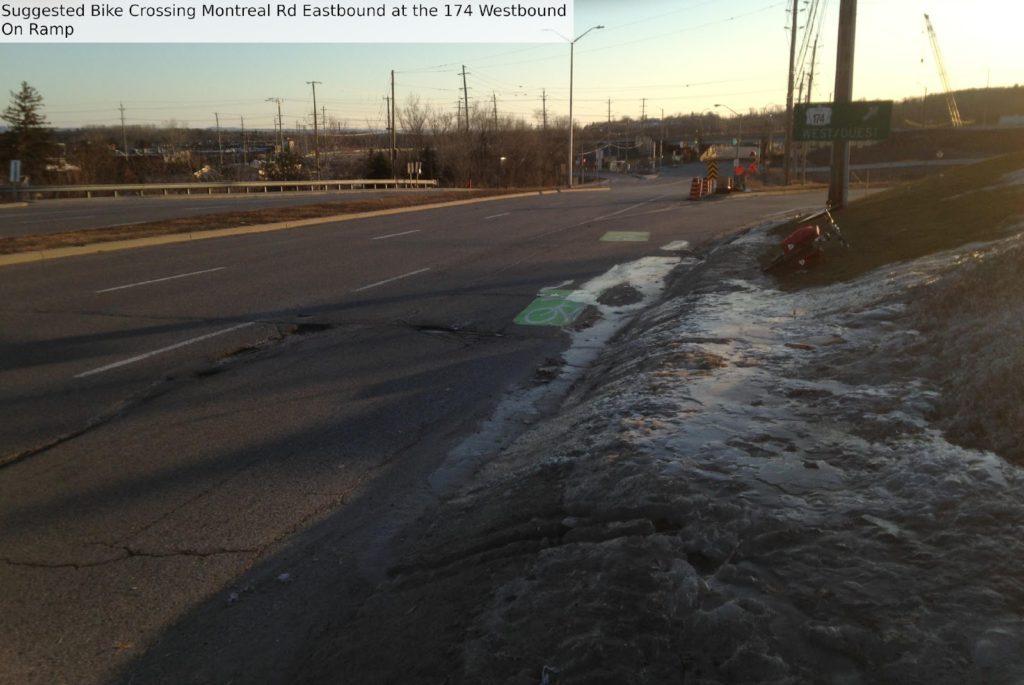
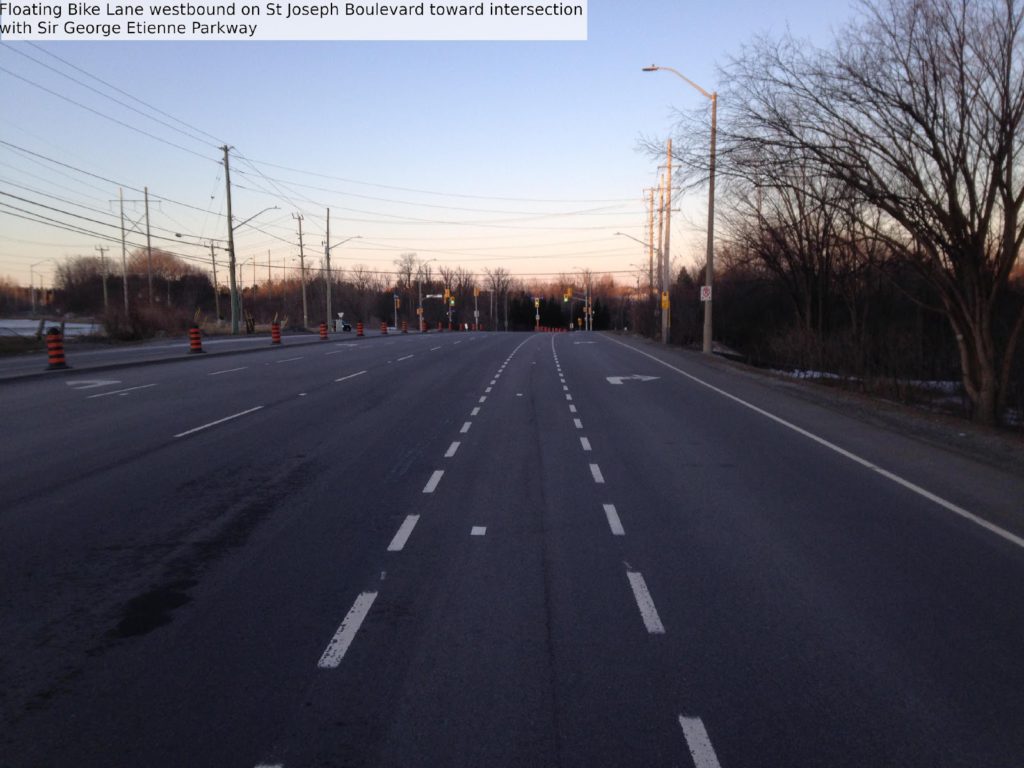

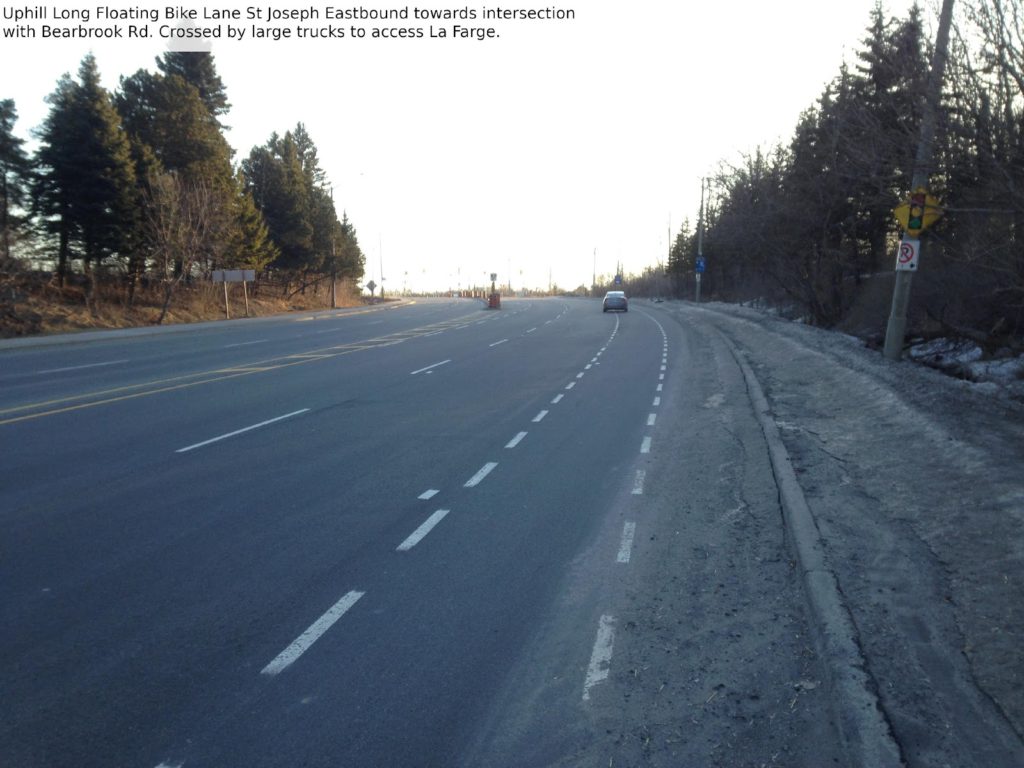
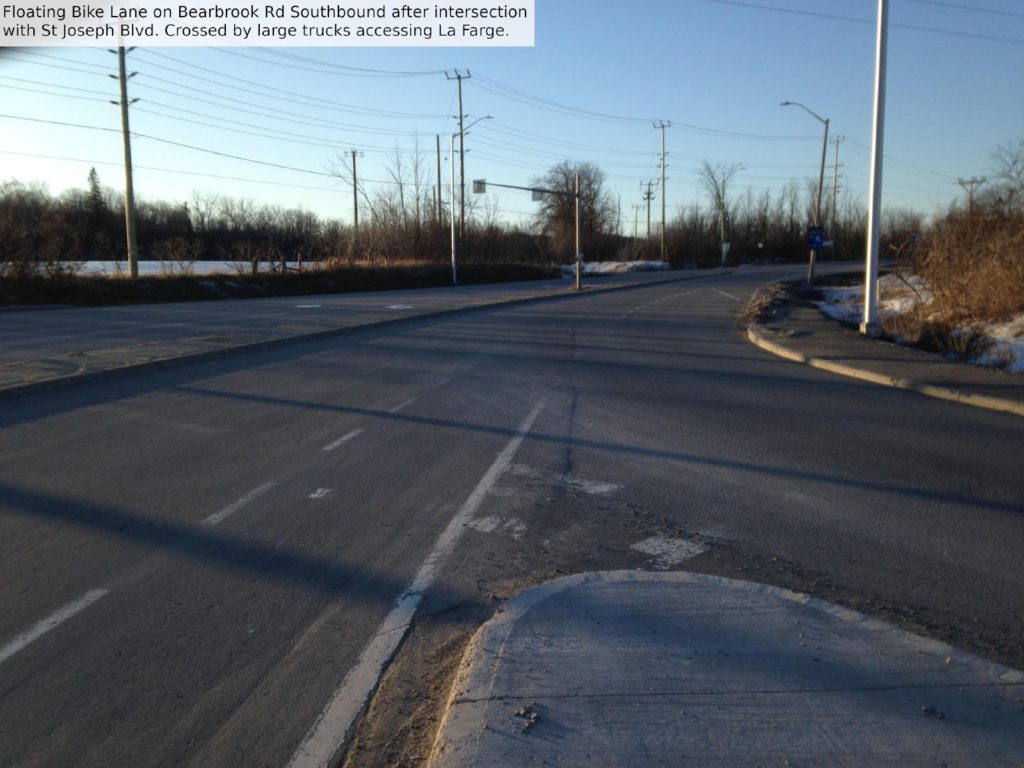
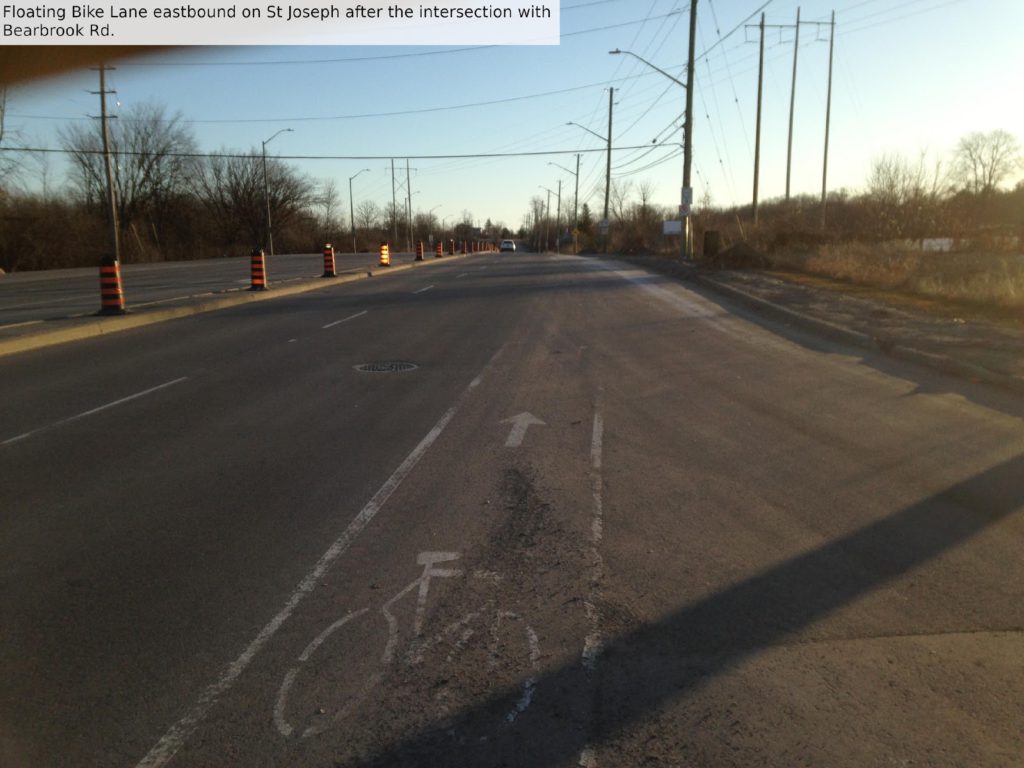
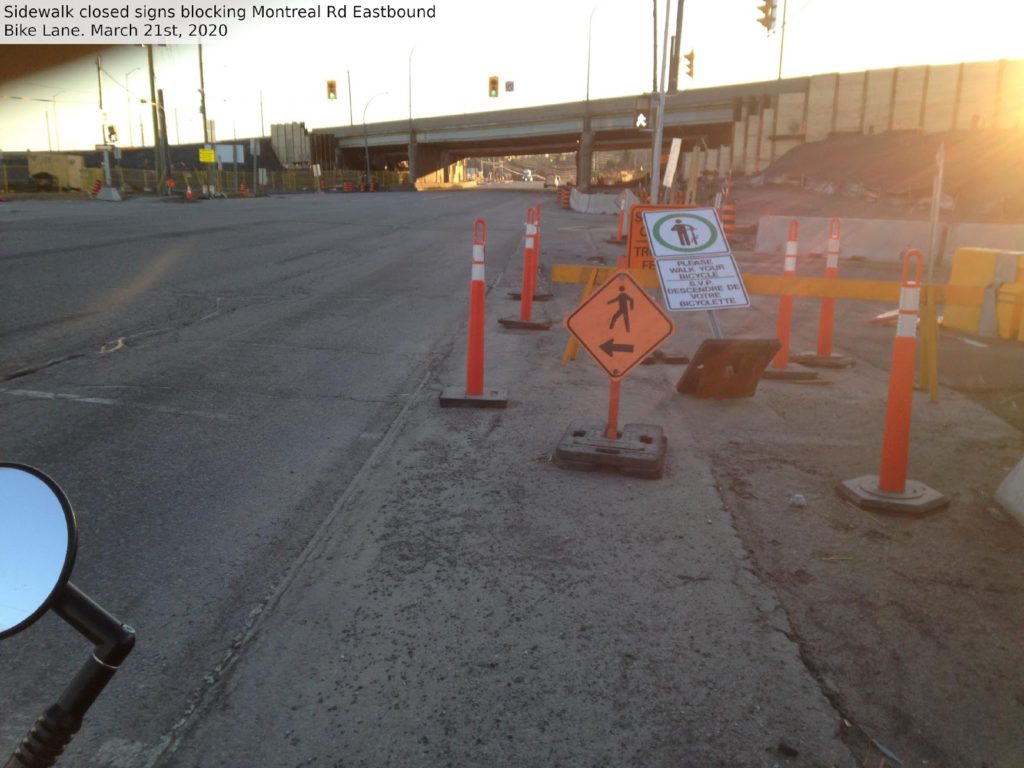
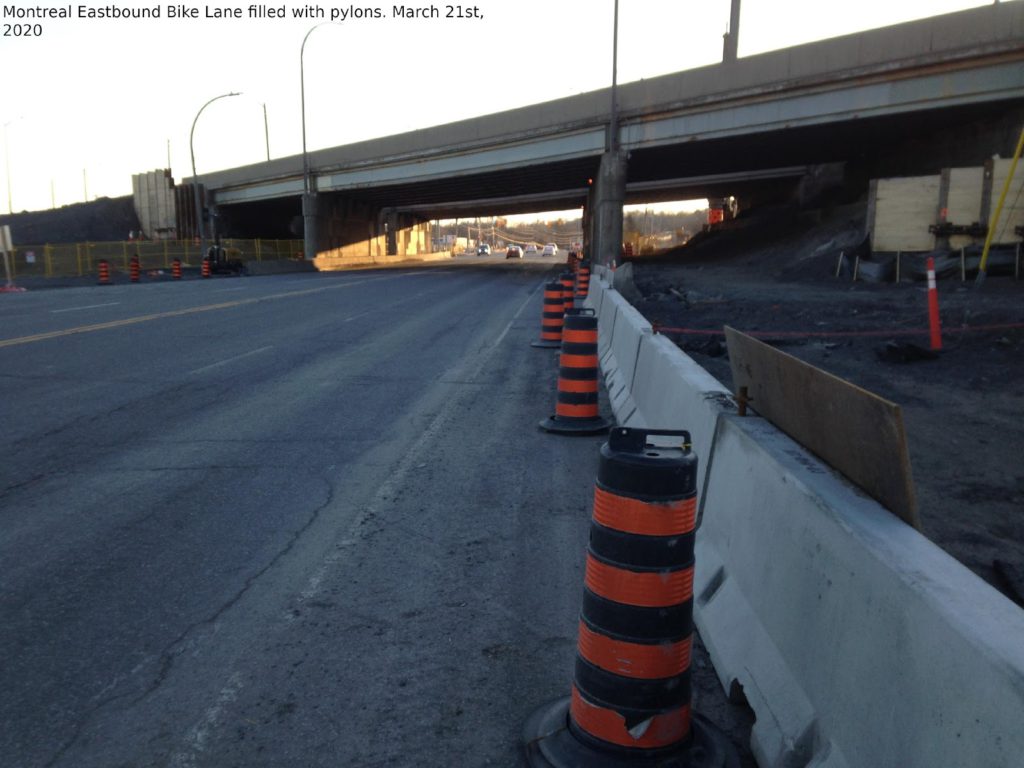
Here is the response from the city:
Bike Ottawa
May 7 2020
Subject: LRT Stage 2 Montreal Rd Station
Dear Bike Ottawa,
Thank you very much for writing to the Stage 2 Project Office on behalf of the Bike Ottawa membership, and providing important feedback and recommendations on connectivity to the future Montreal LRT Station. Your letter comes at a time when the City is conducting a Connectivity Review for all of the Stage 2 LRT stations. All of the proposed Connectivity enhancements can be found at https://ottawa.ca/en/city-hall/public-engagement/projects/stage-2-lrt-station-connectivity-enhancement-study. While you’ve already included the Planning, Infrastructure, and Economic Development Office completing the Orleans Corridor Study, I will also share your suggestions with colleagues in the City’s Transportation Planning Office, who are responsible for long term planning of cycling and pedestrian connectivity throughout the wider area, and not just to LRT stations.
As you know, your feedback will also be included in an ‘As We Heard It’ report for this last LRT connectivity review which will be available online by mid-month. The collective feedback will be taken into consideration as detailed roadway designs as part of the Stage 2 Project are developed; the public will be updated once this design work takes place. To receive this information, we encourage your membership to consider visiting Ottawa.ca/Stage2 and signing up for our e-newsletter updates, targeted to specific station areas, by clicking on ‘Connect with us.’
Please see below responses to each of your suggestions.
Eastern & western side of the bridge
- Removal of all floating bike lanes on Montreal Rd and St. Joseph Blvd between Shefford Rd and Bearbrook Rd/Sir George-Étienne Cartier Parkway.
Floating bike lanes will be removed wherever possible within the scope of work, as per the approved
design.
- Installation of segregated cycling facilities accessible in all seasons.
Where possible, off road cycling facilities are being provided, and segregated features (separation from traffic using pinned curb sections) will be adopted to the extent that they can be included in the design.
- Removal of the vehicle lane on the North side of Montreal Road that connects the Shefford Rd right turn slip lane and 174 Westbound off ramp.
This lane is required from a traffic capacity perspective, and its removal is not in the scope of the Stage 2 contract. It should be noted that the floating bike lane is intended to be removed at this location, reducing the potential for conflicts with the right turn lane.
- All highway on/off ramps and the Beacon Heights Retirement Residence entrance should connect to Montreal Rd at a 90 degree connection. To facilitate reduced vehicle speeds.
This request was reviewed in detail, and cannot be adopted at all noted locations due to various constraints, such as grading. Where diverging ramps are still required, raised crossings are being introduced as part of the design.
- All pedestrian and cycling crossings of on/off ramps and the entrance of the Beacon Heights Retirement Residence should be raised to decrease vehicle speeds while crossing.
See response above.
- Crossing should also be set back slightly from any intersection to allow vehicles a better view of those crossing the street while turning.
All pedestrian crossings are being designed so as to be compliant with the Ontario Traffic Manual and City of Ottawa standards.
Intersections of Montreal Rd & Shefford Rd, and St. Joseph Blvd & Bearbrook Rd/Sir George-Étienne Cartier Parkway
- These intersections should be updated to fully protected intersections.
These intersections are out of scope for the Stage 2 LRT.
- The installation of a protected intersection will remove the slip lanes, which are a danger to pedestrians and people on bikes. A protected intersection will allow turning vehicles a better view of both pedestrians and people on bikes. It will also force drivers to slow down before turning, making the road safe for vulnerable road users.
Protected intersections will be implemented at several locations within the scope of Stage 2 LRT.
- A protected intersection would also have corner islands to slow vehicles down while turning and provide a clear line of sight of pedestrians and cyclists.
- Installation of segregated cycling facilities accessible in all seasons.
To be included where possible, and when within scope.
- Removal of all floating bikes lanes leading to these intersections.
Floating bike lanes will be removed wherever possible within the scope of work, per the approved design.
- Crossings should be set back from the intersection to allow turning vehicles to have a better view of individuals crossing the road while turning.
All pedestrian crossings are being designed so as to be compliant with the Ontario Traffic Manual and City of Ottawa standards.
- Set back stop lines for vehicles so that pedestrians and cyclists are ahead of vehicles and in full view.
All pedestrian crossings and stop bars are being designed so as to be compliant with the Ontario Traffic Manual and City of Ottawa standards. Opportunities to locate the bicycle stop bar ahead of the vehicular stop bar will be investigated.
- Advanced cycle and walking signals, to allow pedestrians and cyclists to cross the intersection before vehicles begin to.
Not in Stage 2 realm of influence – this is a Traffic Operations decision. Traffic Operations will be
reviewing the timing of cycle and walking signals in proximity to the Stage 2 LRT stations.
- With the increased interaction of cyclists/pedestrians with large trunks at the intersection of St Joseph Blvd and Bearbrook Rd, as a result of La Farge Quarry on Bearbrook Rd, it is important that these safety measures be implemented to prevent an accident like the one downtown, where a large truck was turning right and killed a cyclist.
The intersection of St Joseph/Bearbrook is not in scope for Stage 2 LRT.
During construction of LRT Stage 2
- The re-installation of Flexi Posts from 2019 in this area to provide safer infrastructure during construction.
The area where the TC-51 flex posts were installed in 2019 has been reconfigured with an off road
cycling facility provided instead.
- During the construction the current bicycle lanes must remain open and free of debris/obstacles (stones, pylons, etc.). If the bicycle lane must be closed, then a suitable and protected detour must be put in place. Without a proper detour you will be placing people on bikes at risk, sharing the lane with drivers moving at high speed. Do not place cyclist in the same lanes as vehicles and use single file signage, this results in an increased danger and an increase in verbal harassment from drivers.
Bicycle facility closures will be accommodated by the contractor using methods compliant with the Project Agreement, which may at times include “single file” signage, although this strategy is strongly discouraged and its use minimized.
Thank you for your ongoing participation.
Signed,
Stage 2 Project Team
Rail Construction Program Office
City of Ottawa
(Rendering of the future Montreal Rd Station via the City of Ottawa.)

